
MinerAlert

MinerAlert
UTEP TECHNOLOGY SUPPORT
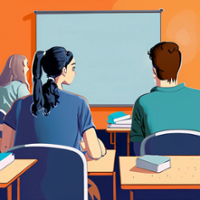
Classroom support is our highest priority. It is in the classrooms where our students receive their education; hence, we must excel in the tech support we provide to faculty in the classrooms.
To help us improve and measure our quality of work, we ask faculty for their feedback as their classroom-support-related requests are resolved. Our goal is to obtain a monthly Customer Satisfaction rating of 93% or better.
Outcomes:Unfortunately, our goal was not met in a couple of months during the measurement period (see graph below). Consequently, we have started to ask faculty to complete a classroom technology survey right after their first school day. Our technological improvements made early in the semester resulting from the survey findings are positively impacting the faculty and student experience with technology in the classrooms. These proactive actions, along with the new classroom AV designs being deployed across campus are expected to ensure our success in meeting our customer satisfaction index in the upcoming year.
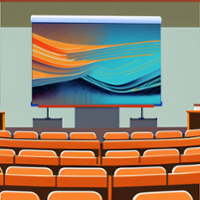
Enhance teaching and learning experiences in classrooms across campus by keeping AV infrastructure up to date to ensure faculty’s latest devices and applications are supported. To keep up with major AV technology changes we must refresh the AV equipment in a classroom every five years. As a reference, we have 272 classrooms for credit-bearing courses. Since our budget is limited, we must prioritize classroom upgrades by using equipment age and usage.
Outcomes:
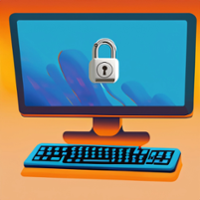
Our team has identified that many of our vulnerabilities are with third-party applications installed on computers using the Windows Operating System. Third-party patch management will be essential to address these vulnerabilities as it will allow us to push critical updates to minimize the risk of vulnerabilities with these applications.
Outcomes:
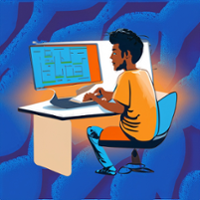
We use the IR Services Catalog pages to publish on the web the IT services offered to the UTEP community. These web pages provide our UTEP faculty, students, researchers, and staff with an overview of the IT services and how to request them. The goal of this initiative is to ensure that over seventy IR services catalog pages remain relevant and resourceful to our users. The team will need to collaborate with service owners across IR to accomplish this initiative.
Outcomes:

Our customers use traditional communication mediums such as telephones and emails to open a support request for IT help. Nowadays, newer communication methods exist and are used by our customers, and we shall enable these to connect with us. Also, we need to create more self-serve resources for our customers to fix commonly technology-related issues on their own.
Outcomes:

UTEP faculty were surveyed and cited student engagement being a major challenge in their courses. In collaboration with faculty champions and the Center for Faculty Leadership and Development, we need to develop a training series for faculty meant to effectively engage students synchronously and asynchronously.
Based on the student survey conducted by an Information Resources committee in the fall of 2021, students indicated that the following learning activities kept them engaged: group discussions, recorded course concepts or lectures, polling, and gaming.
Collaboration with the InSPIRE team has led to the development of the Student Engagement with Technology Institute (SETI). SETI is a series of workshops for faculty on learning technologies and activities that the team identified as helping with student engagement. The workshops focus on pedagogical practices and are complemented by demonstrations of how to use the instructional technologies being covered. For more information on SETI, visit https://www.utep.edu/faculty-development/events/studentengagement.html.

We have reached the end of support for the print release devices with our current print management solution. In addition, it seems that higher education is no longer a priority for the current vendor. We need to explore and evaluate other print management solutions and transition to a more robust system that will improve the overall print experience for our students.
Outcomes:We will continue to work on strategies to improve the visibility of this service and overall experience.
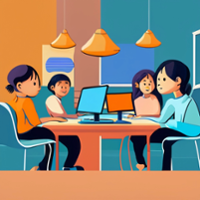
As you may well know, the traditional computer classroom, equipped with a fixed set of desktop computers, was designed to facilitate computer-based instruction. However, with the widespread availability of personal laptops among our student body, it has become increasingly apparent that a significant number of students now prefer to bring their own devices to class for various educational and productivity purposes. Additionally, our collaboration with software vendors in recent years has resulted in increased access to academic software needed to complete schoolwork by students using their own computing devices. Furthermore, the institution’s wireless infrastructure providing seamless access to online resources presents us with a unique opportunity to pilot a prototype of an active learning classroom by replacing the furniture and removing the desktop computers at the Undergraduate Learning Center (UGLC) 236.
Outcomes:
We partnered with faculty in UTEP’s First Year Composition Program to try one converted computer classroom at the Undergraduate Learning Center for Spring 2024 courses. The desktop computers were removed from the UGLC 236 classroom and now offer the following features:
We will assess student and faculty experience in this converted classroom to guide us with any future computer classroom transformations.

Blackboard Institutional Hierarchy serves as the foundation for making Blackboard Data available to leadership and decision-makers. We need to set this up to take advantage of the benefits and to be ready for any strategies that may require access to student data from our learning management system. We believe this framework will be instrumental to many institutional initiatives and is of high priority for us to fully understand and vet the accuracy of everything that is being pushed to the resources that leverage Institutional Hierarchy.

First Level Resolution (FLR) is a critical component of customer satisfaction. FLR is the ability of first-line personnel to resolve support requests without the need to escalate to other often limited specialized IT individuals. The higher the FLR is, the faster support requests are resolved, and customer satisfaction is improved.
Technology Support Analysts are the first-line personnel in Information Resources at UTEP. To increase FLR rates, our Technology Support Analysts must possess a wide range of knowledge and expertise. Leadership must allocate the resources necessary to keep these individuals knowledgeable and up to date with the latest technologies.
Outcomes: